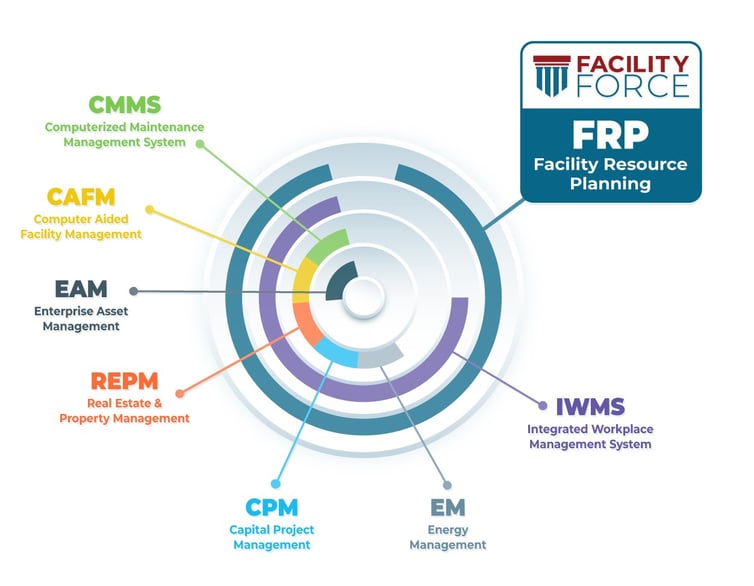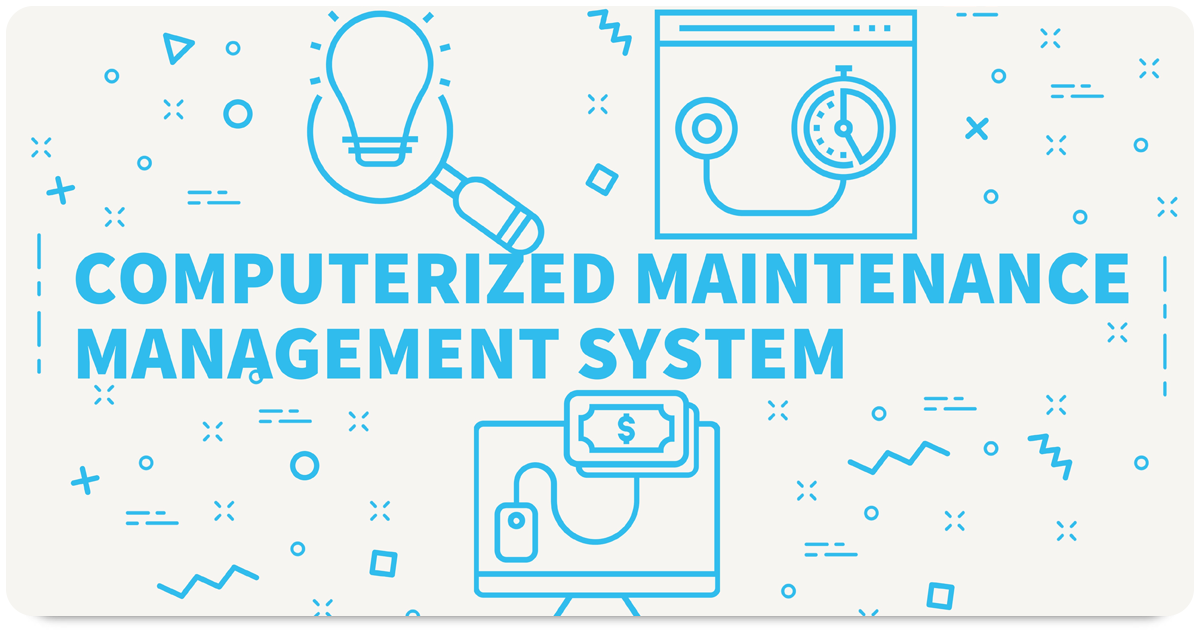Imagine a world where every piece of equipment in your facility runs smoothly, unexpected breakdowns are a thing of the past, and maintenance tasks are seamlessly managed with precision. This isn't a futuristic fantasy—it's the reality offered by Computerized Maintenance Management Systems (CMMS).
In this blog, we'll delve into the powerful capabilities of CMMS and how it can revolutionize your maintenance operations, boosting efficiency and extending the life of your assets. Whether you're a seasoned facility manager or new to the field, understanding what a CMMS can do is the first step towards a more streamlined, cost-effective, and proactive maintenance strategy. Let's explore the transformative potential of CMMS and how it can benefit your organization.
Table of Contents
- What is CMMS Software
- How does CMMS compare to other systems?
- What are the benefits of using a CMMS System?
- What is the best CMMS?
- Conclusion
What is CMMS Software?
History of CMMS
The history of Computerized Maintenance Management Systems (CMMS) dates back to the late 1960s and early 1970s when organizations began seeking more efficient ways to manage maintenance tasks and track equipment performance. Initially, CMMS solutions were basic, often limited to mainframe computers and simple data storage. As technology advanced, so did CMMS capabilities. By the 1980s and 1990s, with the advent of personal computers and more sophisticated software, CMMS became more accessible and functional, offering features like work order management, preventive maintenance scheduling, and inventory control. Today, CMMS has evolved into a comprehensive, cloud-based tool that integrates with other enterprise systems, providing real-time data and analytics to optimize maintenance operations and asset management.
Overview of CMMS
The purpose of a Computerized Maintenance Management System (CMMS) is to streamline and optimize the management of maintenance operations and asset performance within an organization. It achieves this by automating maintenance tasks, tracking equipment and asset details, managing work orders, scheduling preventive maintenance, and maintaining accurate inventory records.
A Computerized Maintenance Management System (CMMS) encompasses several key functional areas designed to streamline and optimize maintenance operations. These include:
1. Asset Management:
This involves tracking detailed information about assets and equipment, such as location, specifications, and maintenance history. It also includes monitoring the lifecycle of assets to ensure optimal performance and timely replacement.
2. Work Order Management:
This function facilitates the creation, assignment, and tracking of work orders for various maintenance tasks. It helps prioritize and schedule maintenance activities to ensure tasks are completed efficiently and on time.3. Preventive Maintenance:
A CMMS schedules regular maintenance tasks based on time intervals or usage thresholds. It automates reminders and generates work orders for preventive maintenance, reducing the likelihood of unexpected breakdowns and extending equipment lifespan.
4. Inventory Management:
This area involves managing spare parts and supplies inventory to ensure the availability of necessary items. It tracks inventory levels, reorder points, and procurement processes to avoid stock outs and overstock situations, optimizing resource utilization.
5. Maintenance Reporting and Analytics:
A CMMS generates detailed reports and analytics on maintenance activities, asset performance, and costs. These insights help organizations make informed decisions, identify trends, and continuously improve their maintenance strategies.
6. Labor Management:
This function tracks labor hours, skills, and availability of maintenance personnel. It assigns tasks based on technician expertise and workload, optimizing resource utilization and ensuring efficient task completion.
7. Vendor Management:
A CMMS manages relationships with external vendors and service providers. It tracks vendor performance, service contracts, and maintenance activities conducted by third parties, ensuring they meet organizational standards.
8. Compliance and Safety Management:
This area ensures adherence to regulatory requirements and safety standards. It records compliance-related activities and maintains documentation for audits and inspections, helping organizations avoid legal issues and maintain a safe working environment.

Read More: Looking for a CMMS? Why You Might Need an IWMS Instead
How does CMMS compare to other facility management software systems?
When comparing a Computerized Maintenance Management System (CMMS) to other facility management systems, such as Enterprise Asset Management (EAM), Computer-Aided Facility Management (CAFM), and Integrated Workplace Management Systems (IWMS), it's important to understand their distinct features and purposes. Here's how CMMS stands out and compares to these systems:
CMMS vs. EAM
A CMMS focuses primarily on the maintenance management of an organization's physical assets. It includes functionalities such as work order management, preventive maintenance scheduling, asset tracking, and inventory management. The main goal of a CMMS is to ensure that maintenance activities are performed efficiently, thereby reducing downtime and extending the lifespan of equipment.
In contrast, an EAM system encompasses a broader scope, covering the entire lifecycle of an organization’s assets. This includes not only maintenance but also asset acquisition, performance monitoring, compliance, and eventual disposal. EAM systems often provide more comprehensive analytics and financial planning tools related to asset management.
CMMS vs. CAFM
CAFM systems are designed to support the management of physical spaces and the facilities within them. They provide tools for space planning, move management, and real estate management, in addition to maintenance functionalities. CAFM systems typically include graphical representations of facilities (e.g., floor plans) to assist in space utilization and planning.
While a CMMS can include some aspects of space and facility management, its core focus remains on maintenance operations. It excels in managing maintenance tasks, schedules, and resources but may not offer the extensive space planning and management capabilities found in a CAFM system.
CMMS vs. IWMS
A Computerized Maintenance Management System (CMMS) and an Integrated Workplace Management System (IWMS) serve distinct yet complementary purposes in facility management. While CMMS is focused primarily on optimizing maintenance operations , an IWMS integrates a broader spectrum of facility management functions including real estate management, space planning, capital project management, and sustainability initiatives. It provides a comprehensive platform for managing the entire workplace environment, enhancing operational efficiency, and supporting strategic decision-making across multiple facets of facility operations. While CMMS is essential for organizations prioritizing maintenance excellence, IWMS offers a holistic approach to facility management, integrating diverse functions to optimize the workplace environment and support organizational goals effectively.
Still feeling overwhelmed? We have a jargon-free guide to facility management software systems.
Check out that article here: Facilities Management Software Jargon... Simplified

What are the benefits
of implementing a CMMS?
Improved Maintenance Efficiency
CMMS automates and streamlines maintenance workflows, including work order management, preventive maintenance scheduling, and asset tracking. This improves the efficiency of maintenance activities, reduces paperwork, and ensures timely completion of tasks.
Reduced Downtime
By scheduling preventive maintenance based on asset conditions or usage patterns, CMMS helps prevent unexpected breakdowns and reduces equipment downtime. This proactive approach enhances equipment reliability and extends asset lifespan.
Enhanced Resource Utilization
CMMS enables better allocation of resources such as labor, spare parts, and equipment. By tracking inventory levels and maintenance schedules, organizations can optimize resource usage, minimize waste, and improve productivity.
Cost Savings
Effective maintenance management through CMMS helps control maintenance costs by reducing emergency repairs, optimizing inventory levels, and extending asset lifespan. It also supports better budget planning and allocation based on maintenance data and analytics.
Data-Driven Decision Making
CMMS provides comprehensive reporting and analytics on maintenance performance, asset reliability, and costs. These insights empower organizations to make informed decisions, identify trends, and continuously improve maintenance strategies and asset management practices.
What is the best CMMS for you?
Now that you understand the capabilities of a CMMS and its potential benefits for your organization, you might be contemplating how to choose the right one. Selecting a CMMS is a crucial decision that can greatly enhance your organization's maintenance operations and asset management processes. Here are key considerations when evaluating CMMS options:
Functionality
Assess the core functionalities of the CMMS, such as work order management, preventive maintenance scheduling, asset tracking, inventory management, and reporting capabilities. Ensure that the CMMS aligns with your organization’s maintenance requirements and operational workflows.
Ease of Use
User interface and ease of navigation are vital factors for adoption and usability. A user-friendly CMMS interface simplifies training for staff and facilitates efficient daily use across different departments and skill levels.
Scalability
Consider the scalability of the CMMS to accommodate your organization’s growth and evolving maintenance needs. Determine if the system can handle increasing asset volumes, users, and data without compromising performance or requiring significant upgrades.Integration Capabilities
Evaluate the CMMS’s ability to integrate with other existing software systems within your organization, such as Enterprise Resource Planning (ERP), Building Management Systems (BMS), or asset tracking systems. Seamless integration enhances data accuracy, operational efficiency, and collaboration across departments.Cost and ROI
Evaluate the total cost of ownership, including initial setup fees, licensing costs, ongoing maintenance fees, and potential customization expenses. Compare these costs against the expected return on investment (ROI) from improved maintenance efficiency, reduced downtime, and extended asset lifespan facilitated by the CMMS.Mobile Accessibility
In today’s mobile-driven environment, having a CMMS with mobile capabilities is essential. Check if the CMMS offers mobile apps or responsive web interfaces that enable technicians to access and update maintenance tasks, work orders, and asset information from anywhere, enhancing flexibility and responsiveness.
Configuration and Flexibility
Determine the level of configuration options available in the CMMS. Tailoring the system to match specific organizational workflows, terminology, and reporting needs can optimize user experience and operational efficiency.
I hope you found this guide informative and discovered the importance of implementing a Computerized Maintenance Management System (CMMS) that suits your organization's needs. If your organization is seeking a solution to streamline maintenance operations, enhance asset management, and optimize resource utilization, then a CMMS is the ideal choice. While individual maintenance management tools serve specific purposes effectively, a CMMS offers a comprehensive platform designed to centralize maintenance workflows, improve efficiency, and extend the lifespan of assets. Whether you're focused on preventive maintenance, work order management, or inventory tracking, a CMMS provides the essential tools to elevate your maintenance practices and support organizational growth effectively.
"A CMMS is an indispensable tool for organizations striving to optimize maintenance operations, minimize equipment downtime, and extend the longevity of critical assets by implementing systematic maintenance strategies and leveraging data-driven insights."
Would you like to learn more?
Related Resources:
- Facilities Management Overview
- What is the Best IWMS Software for Government?
- The State of Alaska Tackles Statewide Deferred Maintenance
- Why Capital Budgeting Software is Critical in Government Facilities
- Three Keys to Effective Space Management
- Facilities System Integration
- FacilityForce's IWMS Solution




